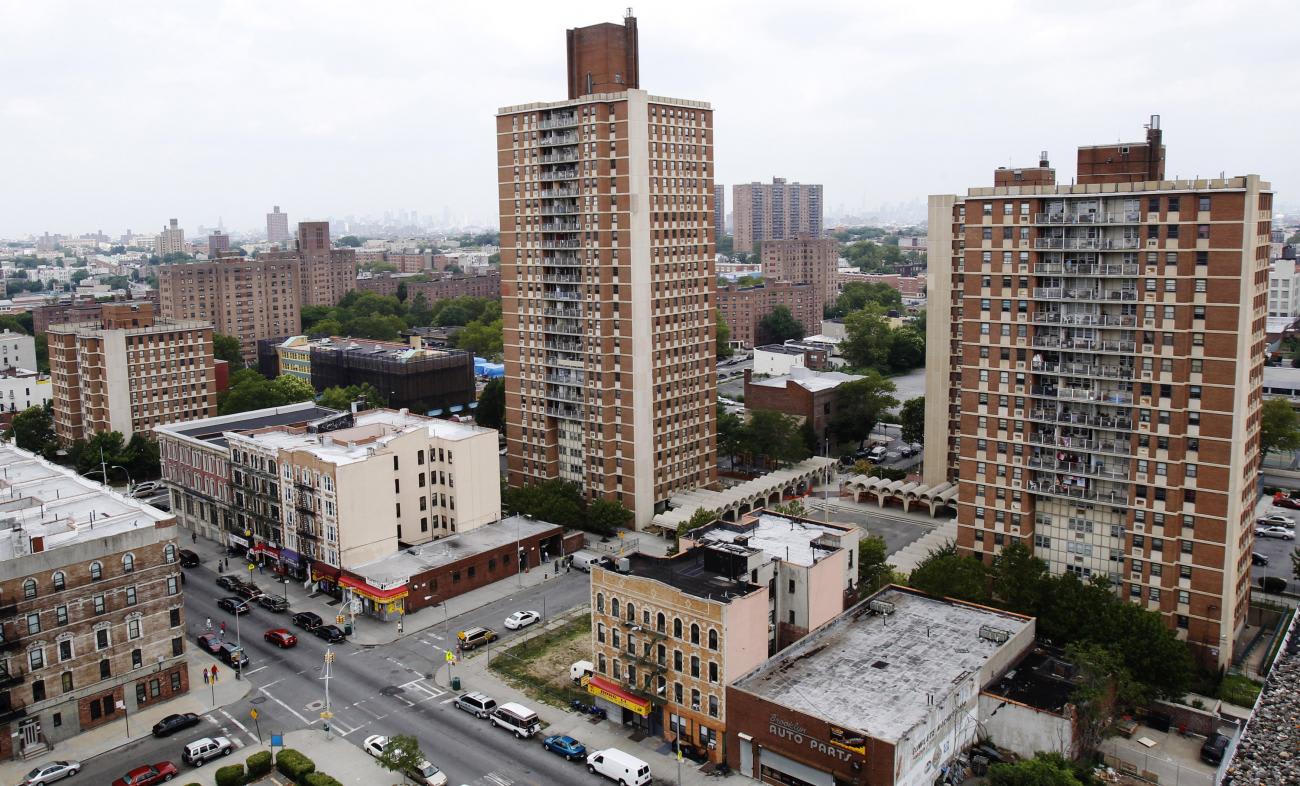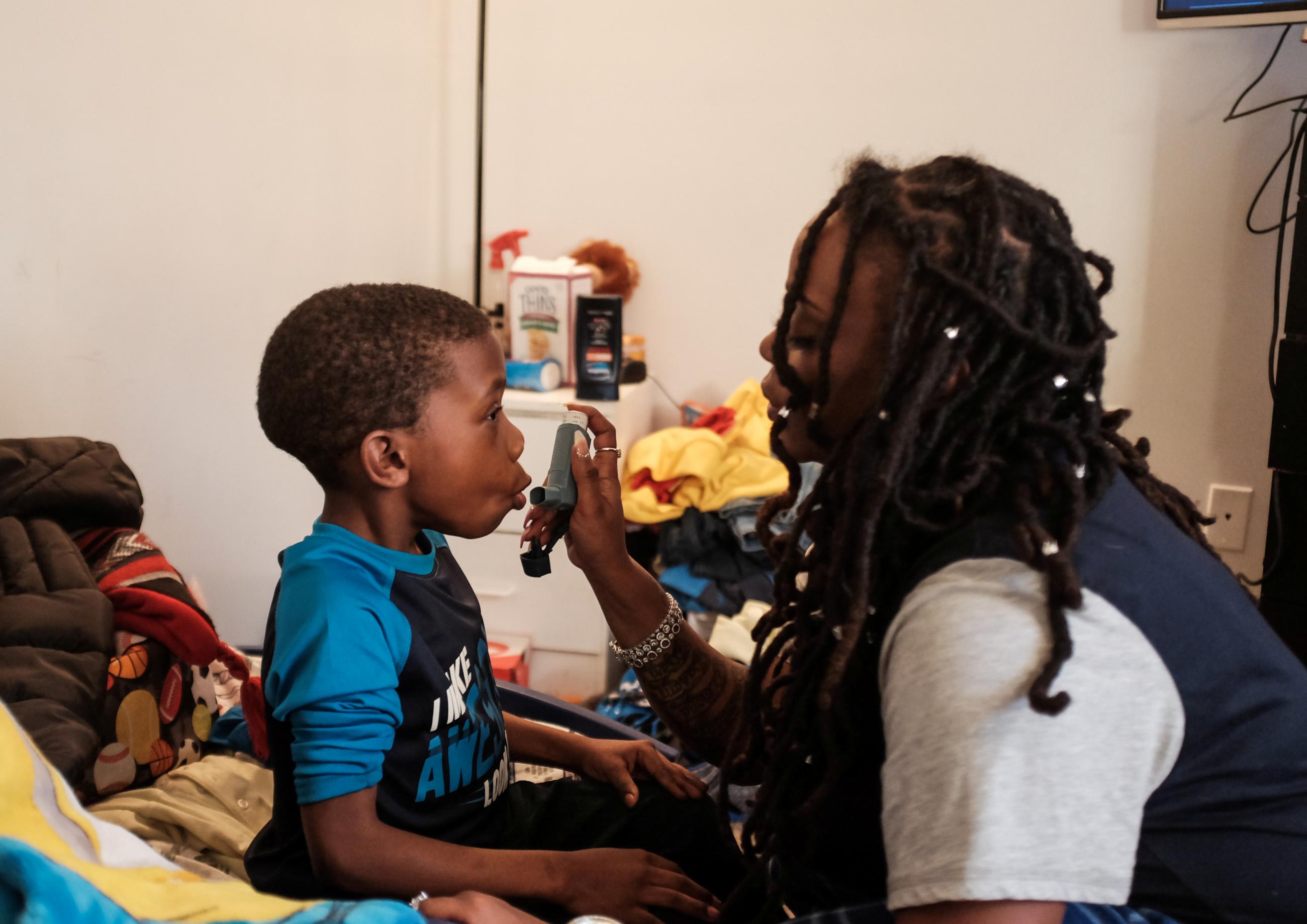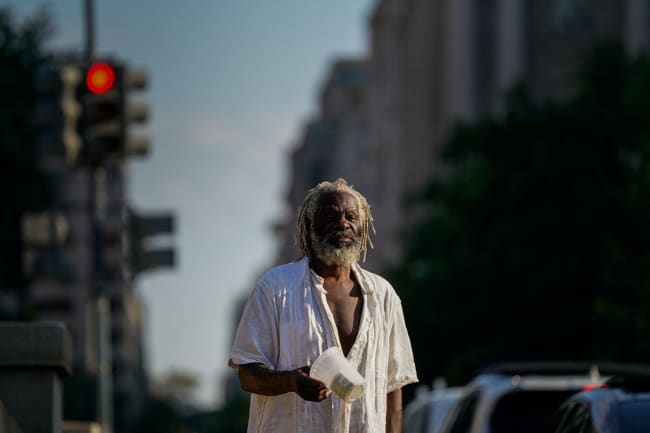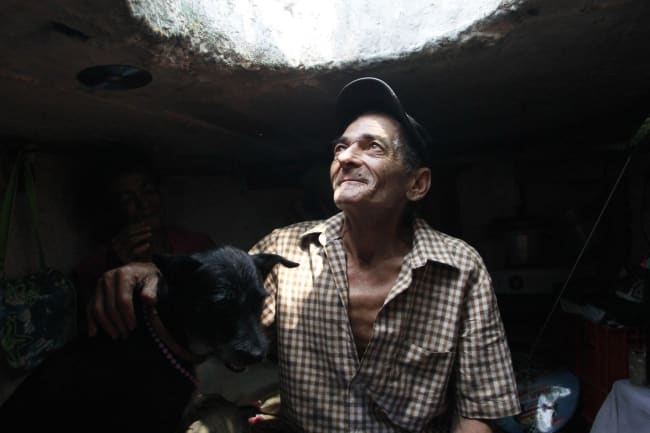An estimated one in ten Americans has asthma, making the United States the worldwide leader in asthma prevalence rates. Of those affected by asthma, Black Americans experience higher rates of asthma-related hospitalization and emergency room visits, compared to white Americans. And Black Americans are three times more likely to die from asthma than white Americans, with Black women dying of asthma at four times the rate of white men.
Asthma-Related Hospital Usage in the United States, in 2018
Rates for Black and white (including hispanic) patients per 10,000 population
Why do these alarming disparities exist? This disparity can be attributed to several factors, including discriminatory housing practices, lower access to quality health care, and chronic stress produced by racism. Proven interventions including tenant protections and affordable housing could help reduce this burden.
Deaths Due to Asthma in the United States per 100,000, from 2015-2020
Because of redlining—federal policies that deemed Black neighborhoods more hazardous than white neighborhoods of similar socioeconomic status and disincentivized lending or investing into predominantly Black neighborhoods—many Black communities in the United States were pushed into legacies of financial oppression that left families less able to buy, rent, or maintain high quality housing. The lack of investment in and lending to Black communities meant that Black families were, and still are, more likely to live in neighborhoods with higher exposure to air pollution—a major risk factor for asthma. Financial oppression also pushes many Black people into low-quality homes that exposes families to hazardous dust and mold that can trigger asthma.
Severe Housing Inadequacy by Race of Householder, in 2019
Percentage of renter households with severely inadequate housing quality
Racist housing policies and the racial wealth gap have also pushed many Black families out of home ownership. A higher proportion of Black households rent homes compared to white households and the gap has only worsened over the last fifty years. On top of this, there is a severe affordable rental housing shortage in many cities because of policies like exclusionary zoning, and the rental property options that do exist are in poor shape. The current public housing and affordable private housing inventory is old, with 42 percent of public housing projects built before 1975. The units that are available are often prone to hazards like lead paint and mold and are in desperate need of maintenance.
When Black families try to leave unsafe housing conditions, they encounter a number of challenges. The low supply of affordable housing means that many people are likely to accept substandard living conditions. Although private landlords have a legal obligation to maintain habitable units, some landlords stall repairs as a way to drive tenants out, a practice that feeds into discriminatory housing policies.
Even when a landlord makes necessary repairs, they could use the fix as justification to increase a tenant's rent to an unaffordable level. Voters in St. Paul, Minnesota, sought to remedy this problem by approving a ballot initiative that capped rent increases for most types of units at 3 percent. Efforts to curb increases in rental prices, like the one in St. Paul, prevents the displacement of people and buys communities time to build an affordable housing stock.
42 percent of public housing projects were built before 1975
The most important strategy to increase affordable housing, however, is to build more of it. This requires ending exclusionary zoning practices so multifamily housing is no longer illegal to build. But changing zoning, alone, does not mean affordable housing gets built. There needs to be a way to lower construction costs so that prices are affordable. Community land trusts (CLTs) are one way to encourage equitable development of affordable housing. When land is held in a not-for-profit community trust, developers can build on it at a lower cost on the condition that they keep the rent affordable. Even more impactful than CLTs, are metropolitan land trusts, owned by local governments rather than nonprofits, to facilitate affordable developments at a larger scale than CLTs. Moreover, affordable housing should be located in desirable areas—even in the face of strong local opposition from homeowners that has consistently derailed affordable housing efforts in the name of protecting property values. These government actions are needed to rectify the historical legacy of racism that created the current disparity in housing quality which has negatively affected health.
In addition to helping build new and affordable quality housing, governments should direct policy efforts to ensure that homes are free from asthma hazards for low-income renters. In 2018, the New York City Council took a step in this direction when it passed the Asthma-Free Housing Act, which requires landlords to "inspect and correct allergen hazards." Other cities utilize proactive rental inspections–inspecting housing at random–to ensure quality and safety of housing instead of waiting for tenant complaints. In an increasingly competitive rental market, government interventions like these are necessary so tenants do not have to live in fear of retaliation and risk losing their housing for requesting repairs.

The Section 8 program is an existing government initiative that helps millions of low-income people pay rent on the private market, but there are years-long waitlists for vouchers, and receiving one doesn't guarantee housing. Even if someone qualifies for and gets a voucher, landlords are not obligated to accept Section 8 housing assistance. Banning discrimination against people who use Section 8 vouchers would help more households utilize the vouchers and give low-income, disproportionately Black, renters more choice in where they live.
Outside of hazardous home environments, research suggests that the chronic stress produced by racism leads to physiological changes that impact asthma onset. In a study of Black and Latino children living in San Francisco, California, children who reported discrimination were more likely to have asthma than children who did not. Another analysis from the Black Women's Health Study reached a similar conclusion that asthma incidence was associated with self-reported experiences of racism in everyday life. Racial trauma shapes both the physical environments Black people navigate and the physiological responses that result in adverse health outcomes.
Centuries of racism in medicine have produced distrust of providers in the Black community
What's more is that when Black people develop asthma, they are more likely to experience challenges accessing quality health care. Physicians underestimate the severity of asthma more frequently in Black patients than in white patients, which often results in worse health outcomes. Compounding this challenge are the centuries of racism in medicine that have produced distrust of providers in the Black community. A lack of trust in providers deters many Black patients from seeing an outpatient physician who can help manage their asthma symptoms. Instead, they wait for their symptoms to worsen which results in Black asthma patients visiting emergency rooms at about five times the rate of non-Black individuals—a trend that can also be explained by a lack of access to insurance among Black families.
Black people with asthma deserve access to quality health-care systems free of bias. More Black providers, coupled with culturally sensitive guideline-based care and increased access to health insurance, are required to improve patient trust and reduce pervasive bias in the health-care systems. Moreover, Black families deserve homes and neighborhoods free of hazardous materials that can cause asthma.
Black History Month is a time to reflect on the cultural heritage, struggles, and achievements of the Black community in the United States. Similarly, this month is an opportunity to assess remaining obstacles to Black progress and well-being, including the staggering racial disparities in asthma burden and treatment. Policy interventions including culturally sensitive asthma care, increased provider diversity, improved access to health care, robust tenant protections, and increased safe and affordable housing options should be implemented to reduce this disparity.

AUTHOR'S NOTE: In the absence of quality data that allow disaggregation by gender, we utilize data that disaggregate by sex, with the understanding that outcomes for people outside the gender binary are often less equitable than they are for cis women or men.
EDITOR'S NOTE: The authors are employed by the University of Washington's Institute for Health Metrics and Evaluation (IHME), which leads the Global Burden of Disease study described in this article. IHME collaborates with the Council on Foreign Relations on Think Global Health. All statements and views expressed in this article are solely those of the individual authors and are not necessarily shared by their institution.












